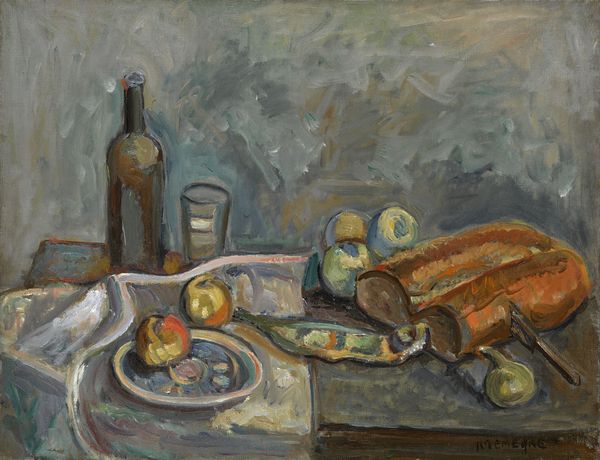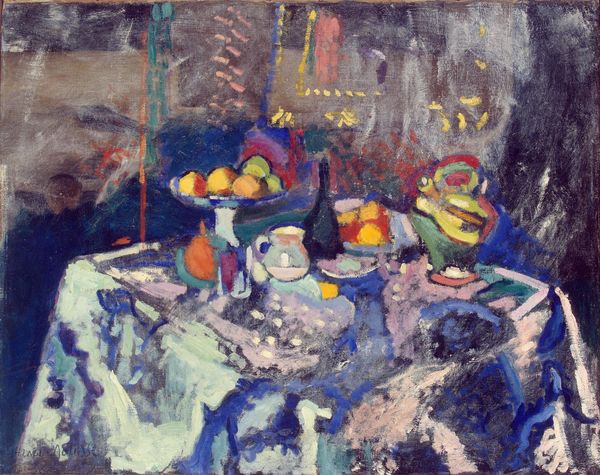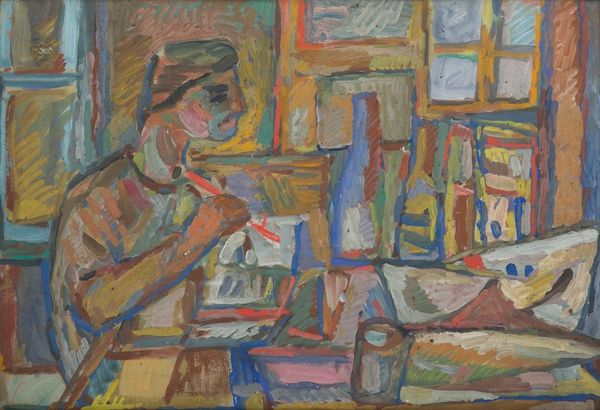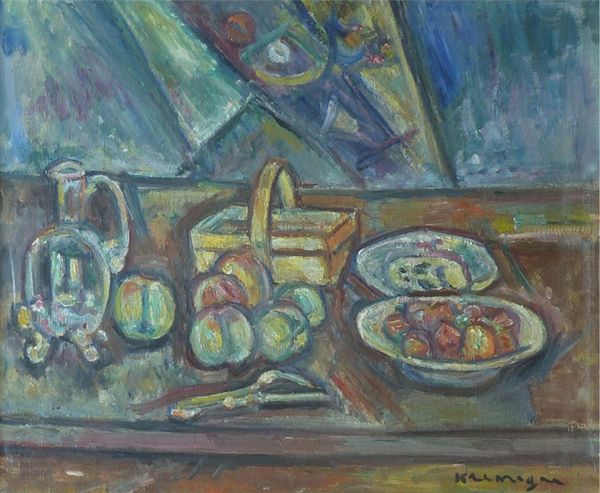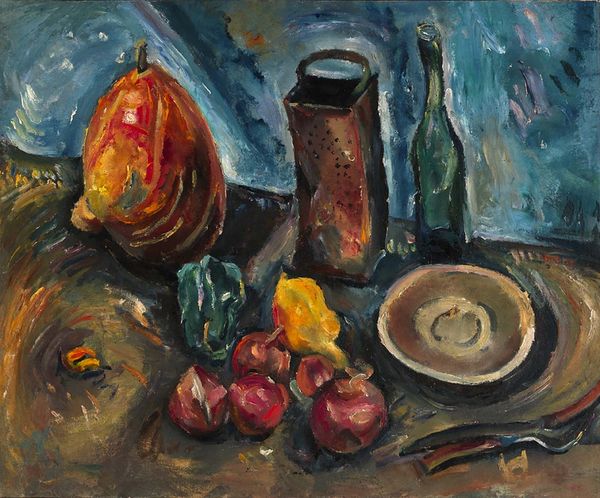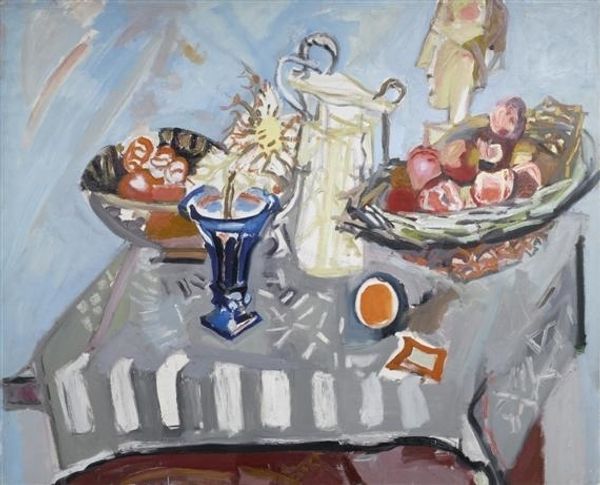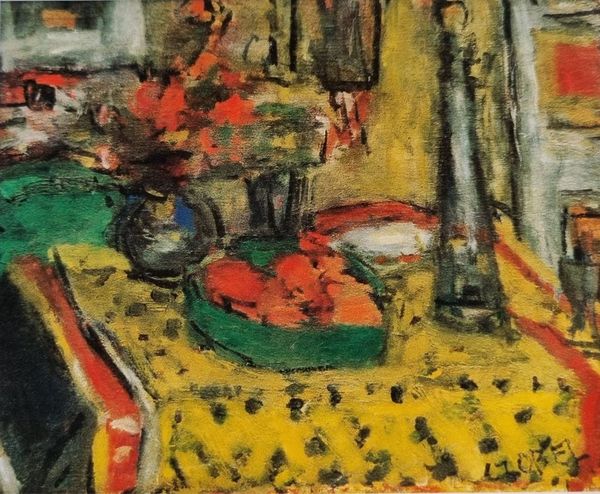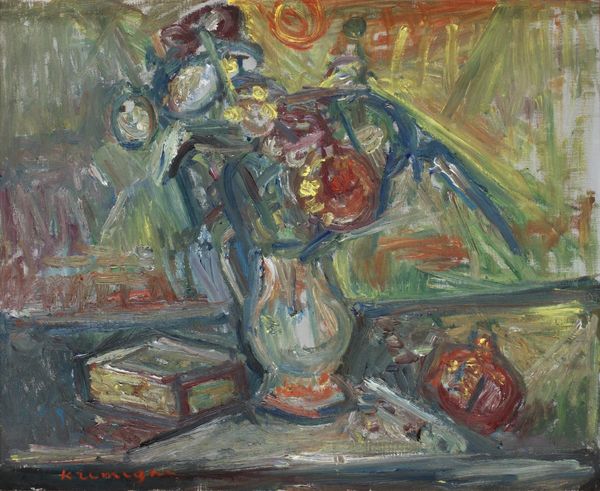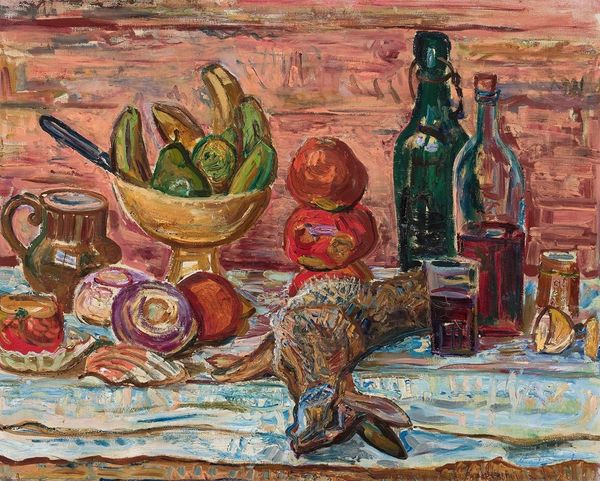
painting, oil-paint
#
painting
#
oil-paint
#
painted
#
oil painting
#
expressionism
Copyright: Pinchus Kremegne,Fair Use
Editor: This is "Still Life with Apples, Wine, Vase and Cup" by Pinchus Kremegne, and it looks like it was made using oil paints. I'm struck by the very tangible texture and how the visible brushstrokes give the objects a robust, almost sculptural quality. How can we analyze what is conveyed through those expressive materials and artistic practice? Curator: It's vital to see how Kremegne engages with materiality. Notice how the oil paint isn't just representing objects; it’s actively *performing* the still life. Look at the impasto, how thickly the paint is laid on. It’s not trying to hide its construction; the labour and the medium are center stage. Are the chosen objects elevated items of wealth or readily accessible, common items, produced in large scale? Editor: Well, a mix. Some mass produced goods, like maybe the wine bottle or drinking cup, sit beside some unique hand-made vessels, but also natural things like fruit, which could be bought at market. So Kremegne is making interesting juxtapositions in this depiction... Curator: Exactly. By depicting manufactured next to "natural," what could that tell us about the shifting social landscapes where mass production changes the value and access of objects? Also, how is the work surface - the table, the drapery behind - depicted in a similar manner to these ‘still life’ elements? Does this suggest all commodities share the same "leveling", in that production processes remove any inherent distinctions? What kind of viewer do you think would respond to that statement? Editor: That’s a very interesting perspective! I hadn't thought about the connection between the objects themselves and the painting's construction materials as commenting on a blurring of boundaries due to the rise of industry and consumerism. So in Kremegne’s world the art labor process becomes as valid of a subject for observation as those objects being produced around him. Thanks! Curator: Precisely! Thinking about art as a product alongside other commodities allows us to see it in its broader cultural and economic context, giving insights into the period that transcend aesthetics alone.
Comments
No comments
Be the first to comment and join the conversation on the ultimate creative platform.

